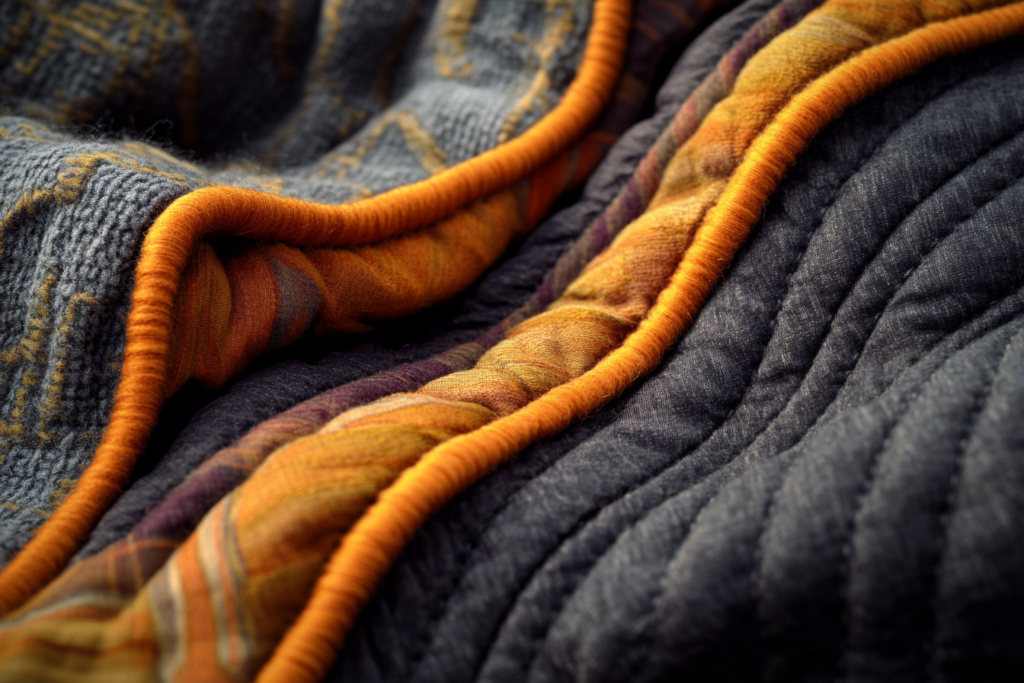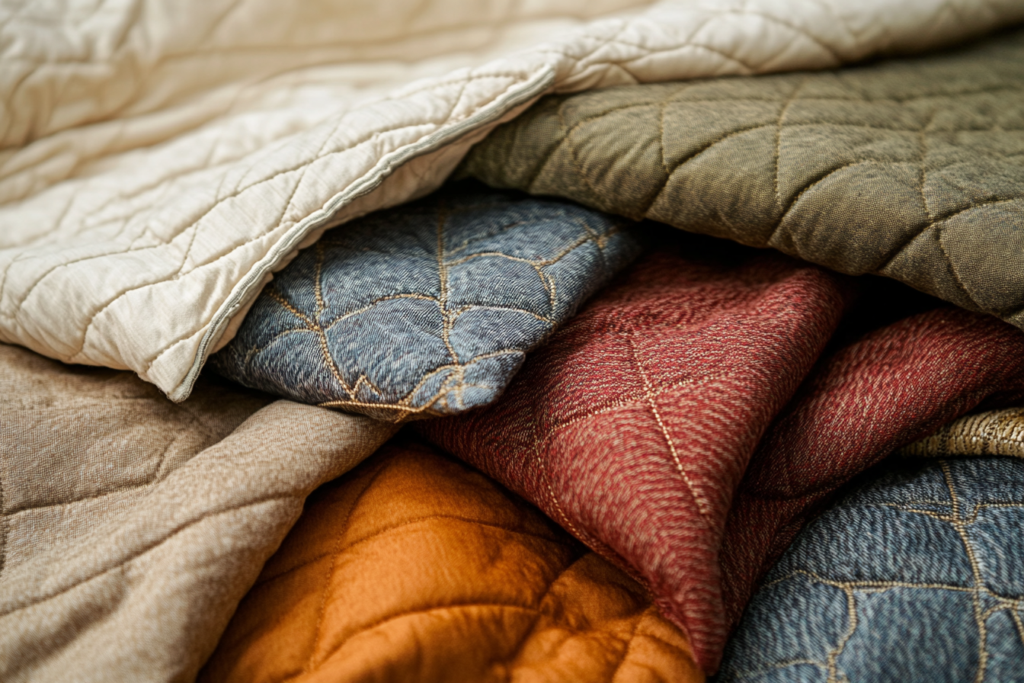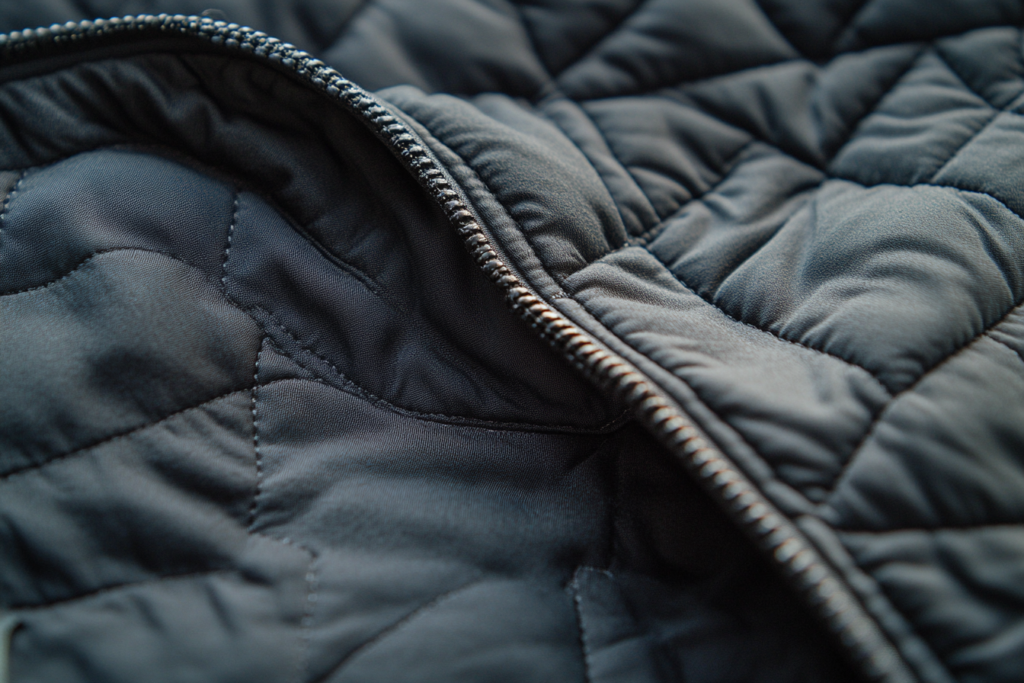Interlining: The Thermal Layer for Warmth and Quilted Effects
Meta Description: Interlining is a thermal layer placed between the outer fabric and the lining to provide insulation and create a quilted effect. Learn about its types and uses in fashion.
What is Interlining?
Interlining is an additional layer of fabric placed between the outer fabric and the lining to provide warmth, structure, and insulation. It is commonly used in coats, jackets, suits, and quilted garments, enhancing both comfort and functionality.
Interlining can be stitched or fused to create a quilted texture, making it an essential component in winterwear, technical clothing, and luxury fashion.


Key Features of Interlining
✔ Provides Thermal Insulation – Traps heat, keeping the wearer warm.
✔ Enhances Comfort – Adds softness and volume to garments.
✔ Creates a Quilted Effect – Common in puffer jackets and padded coats.
✔ Increases Garment Structure – Helps maintain shape and durability.
✔ Available in Various Thicknesses – Can be lightweight for suits or thick for winter coats.
Types of Interlining
- Fusible Interlining
- Has an adhesive backing that bonds to fabric when ironed.
- Used for lightweight jackets, shirts, and structured clothing.
- Sew-In Interlining
- Attached by stitching rather than heat, providing a more natural drape.
- Common in luxury coats and high-end tailoring.
- Quilted Interlining
- Features stitched patterns that secure the thermal layer inside the fabric.
- Found in puffer jackets, ski wear, and insulated coats.
- Wool or Fleece Interlining
- Provides high warmth and softness, ideal for cold-weather clothing.
- Common in premium winter coats and luxury outerwear.
- Synthetic Fiber Interlining
- Made from polyester or microfiber, offering lightweight insulation.
- Found in sportswear, activewear, and water-resistant jackets.
Where is Interlining Used?
📌 Winter Coats & Jackets – Adds warmth and thickness to outerwear.
📌 Tailored Suits & Blazers – Gives structure to lapels and collars.
📌 Puffer Jackets & Quilted Clothing – Creates a signature quilted texture.
📌 Formal Dresses & Eveningwear – Adds volume and shape to gowns.
📌 Home Textiles – Used in curtains, upholstery, and bedding for extra insulation.
Interlining vs. Interfacing vs. Lining: What’s the Difference?
| Feature | Interlining | Interfacing | Lining |
|---|---|---|---|
| Purpose | Provides warmth & structure | Adds stiffness & support | Covers raw seams & improves comfort |
| Placement | Between outer fabric & lining | Between fabric layers or attached to fabric | Inside the garment, against the skin |
| Common Use | Coats, jackets, winterwear | Collars, cuffs, belts, tailoring | Dresses, blazers, skirts |
While interlining provides warmth and thickness, interfacing adds stiffness, and lining ensures a smooth, finished interior.
How to Choose the Right Interlining for Your Garment
✔ For Lightweight Jackets & Blazers → Use fusible or sew-in interlining.
✔ For Warm Winter Coats → Choose quilted or wool interlining.
✔ For Sportswear & Activewear → Opt for synthetic fiber interlining.
✔ For Luxury Tailoring → Use soft, natural interlining for a smooth drape.
Why is Interlining Important in Fashion?
✔ Enhances Insulation – Keeps garments warm and comfortable.
✔ Improves Structure & Fit – Helps garments hold their shape.
✔ Adds Volume & Quilted Effects – Essential in puffer jackets and padded clothing.
✔ Increases Durability – Reinforces fabric, making garments last longer.
Conclusion: The Role of Interlining in Garment Construction
Interlining is an essential component in fashion, providing warmth, structure, and quilting effects. Whether used in winter coats, tailored suits, or quilted outerwear, it plays a key role in improving comfort, durability, and overall garment performance.
From luxury tailoring to technical sportswear, interlining remains a vital element in textile design and functionality.



